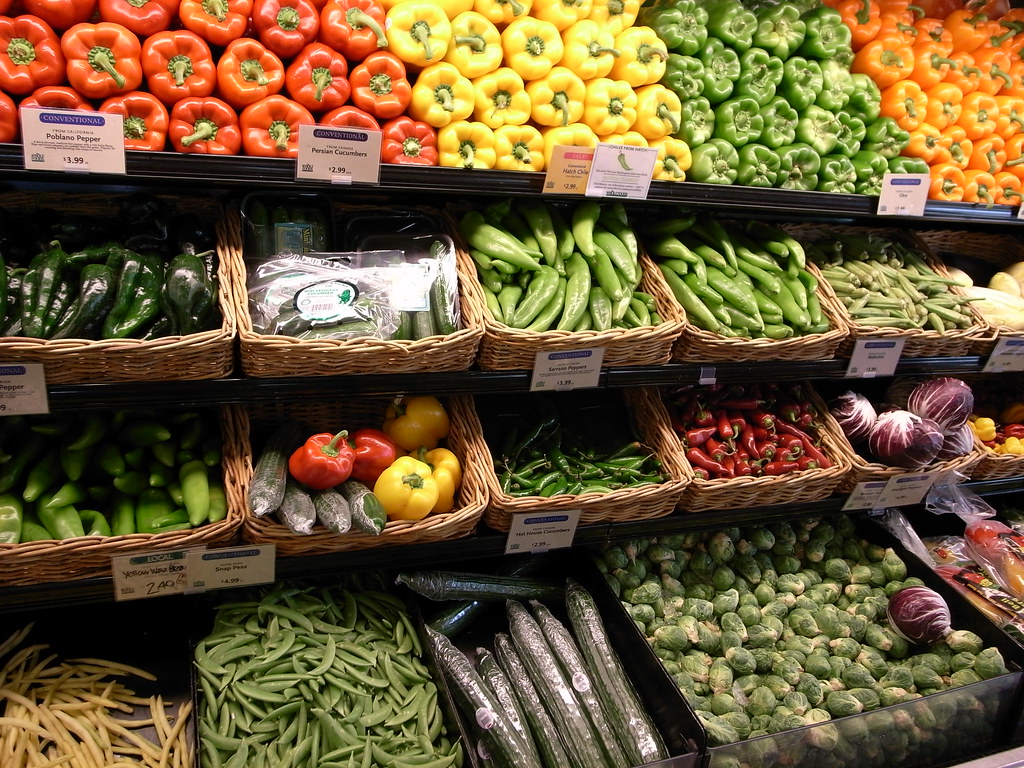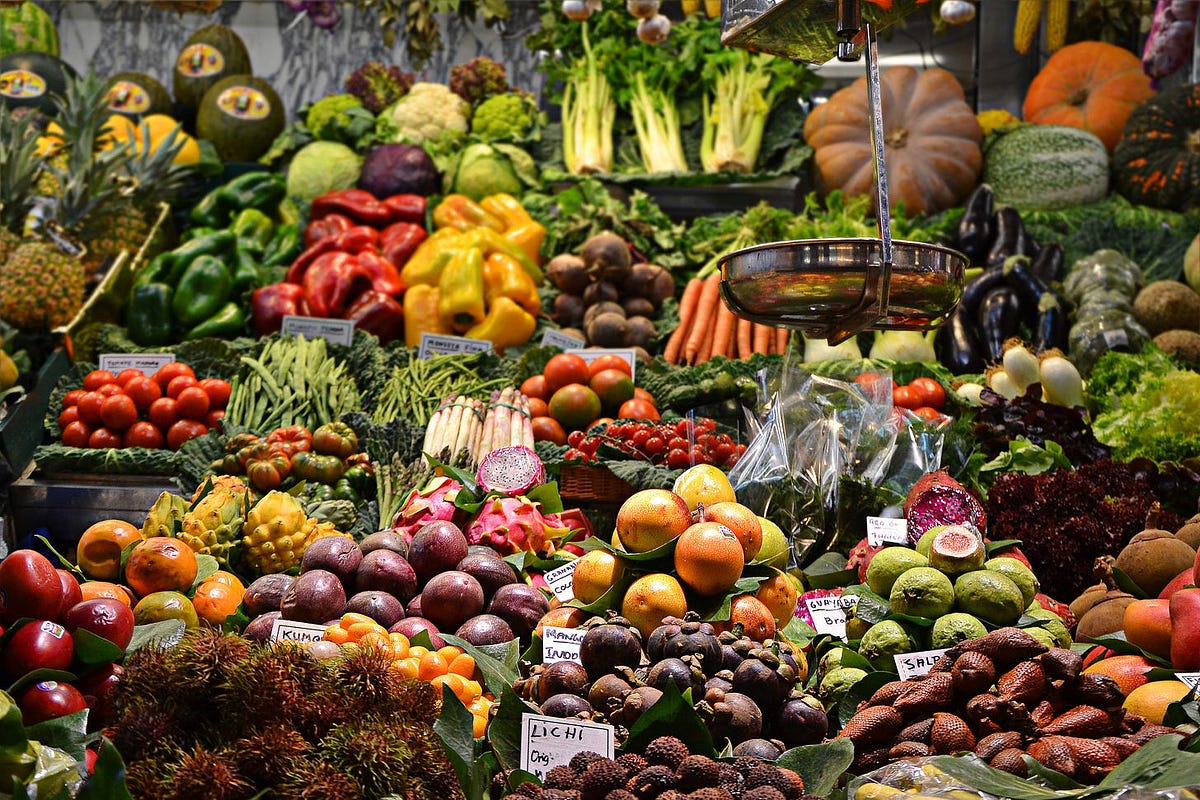
In a world brimming with health advice and diet trends, it’s easy to feel caught in a dizzying cycle of promises and disappointments. Many embark on weight loss journeys with enthusiasm, only to find themselves ‘yo-yoed’—losing weight rapidly, only to regain it, often with added frustration. This pattern not only impacts physical health but can also erode confidence and belief in one’s ability to achieve lasting well-being.
Sustainable health and effective weight management are not about chasing quick fixes or subscribing to rigid, short-term plans that promise dramatic results without addressing the fundamental aspects of nutrition and behavior. Instead, true progress comes from adopting an evidence-based approach, focusing on habits and principles that can be integrated into your life for the long haul. It’s about empowering yourself with knowledge to make informed choices that nourish your body and mind.
To help you navigate this complex landscape, we’ll explore key principles rooted in scientific research and expert consensus. These insights, drawn from respected health organizations and programs, highlight characteristics often found in diets that ultimately fail to deliver sustainable results. By understanding these pitfalls, you can identify and steer clear of approaches that might leave you feeling ‘yo-yoed,’ paving the way for a healthier, more balanced life.

1. **Over-reliance on Processed Foods and Excessive Energy Density**The modern food landscape has seen an increased production of processed foods, coinciding with rapid urbanization and changing lifestyles. Unfortunately, this shift has led many people to consume foods high in energy, fats, free sugars, and salt/sodium. This over-reliance on convenience foods often comes at the expense of vital nutrients, leaving many without enough fruit, vegetables, and other dietary fiber, such as whole grains.
When our diets are dominated by processed items, it becomes incredibly challenging to maintain a healthy balance between energy intake (calories) and energy expenditure. These foods are typically calorie-dense, meaning they pack a lot of calories into small portions, making it easy to overconsume without feeling truly satisfied. This imbalance is a primary driver of unhealthy weight gain and contributes significantly to various noncommunicable diseases (NCDs), including diabetes, heart disease, stroke, and cancer.
Opting for a diet heavily weighted towards processed foods, therefore, means missing out on the protective benefits of whole, natural ingredients. A truly healthy diet, as foundational principles dictate, should prioritize foods that foster healthy growth and protect against malnutrition in all its forms. This means consciously reducing the presence of industrially altered products in favor of ingredients closer to their natural state.
Read more about: Debunked: 14 Critical Protein & Muscle Building Myths That Experts Say Are Holding You Back

2. **The Hidden Dangers of High Free Sugar Intake**One of the most insidious characteristics of unsustainable diets, or simply unhealthy eating patterns, is an excessive intake of free sugars. Free sugars are defined as all sugars added to foods or drinks by the manufacturer, cook, or consumer, and also include sugars naturally present in honey, syrups, fruit juices, and fruit juice concentrates. Health guidelines consistently recommend limiting the intake of free sugars to less than 10% of total energy intake, with a further reduction to less than 5% suggested for additional health benefits.
The health consequences of high free sugar consumption are well-documented and far-reaching. Beyond the immediate impact on dental health, where consuming free sugars significantly increases the risk of dental caries or tooth decay, there are systemic effects. Excess calories derived from foods and drinks rich in free sugars are a major contributor to unhealthy weight gain, directly leading to overweight and obesity—conditions that are leading global risks to health.
Moreover, recent evidence has unveiled deeper connections between free sugars and cardiovascular health. Studies indicate that free sugars can influence blood pressure and serum lipids, suggesting that a reduction in intake directly lessens risk factors for cardiovascular diseases. This underscores that the impact goes far beyond just calories and weight, affecting critical physiological processes.
To combat this, practical advice includes limiting the consumption of foods and drinks that contain high amounts of sugars. This means being mindful of sugary snacks, candies, and all types of sugar-sweetened beverages, which encompass everything from carbonated soft drinks to flavored milk drinks. Instead, consciously choosing fresh fruit and raw vegetables as snacks offers a delicious and nutritious alternative, moving away from these hidden sugar traps.
Read more about: Beyond the Treadmill: 13 Major Cardio Routines That May Be Holding Back Your Fat Loss Goals

3. **Navigating the Complexities of Unhealthy Fats: Saturated and Trans-Fats**Understanding and managing fat intake is crucial for sustainable well-being, and many diets fall short by not adequately addressing the quality of fats. To avoid unhealthy weight gain and reduce the risk of noncommunicable diseases, total fat intake should ideally not exceed 30% of total energy intake. More importantly, there needs to be a conscious shift in fat consumption: moving away from saturated fats and trans-fats towards unsaturated fats.
Saturated fats, commonly found in fatty meat, butter, palm and coconut oil, cream, cheese, ghee, and lard, should be limited to less than 10% of total energy intake. While a component of a balanced diet in moderation, excessive intake contributes to health risks. The real alarm, however, sounds for trans-fats, particularly industrially-produced variants. These should be less than 1% of total energy intake, with the ultimate goal of eliminating them entirely from our food supply.
Industrially-produced trans-fats are not part of a healthy diet and should be avoided. They are frequently found in baked and fried foods, as well as pre-packaged snacks and convenience items like frozen pizza, pies, cookies, biscuits, wafers, and certain cooking oils and spreads. Ruminant trans-fats, naturally occurring in meat and dairy from animals like cows, sheep, goats, and camels, are also a consideration, but the industrially-produced forms pose a greater, avoidable threat due to their widespread use and negative health implications.
Conversely, unsaturated fats—found in nutritious sources like fish, avocado, nuts, and oils such as sunflower, soybean, canola, and olive oil—are preferable. Replacing unhealthy fats with these polyunsaturated fats specifically helps in reducing the risk of NCDs. Practical cooking adjustments can make a significant difference. Consider steaming or boiling instead of frying, and swapping butter or lard for oils rich in polyunsaturated fats. Eating reduced-fat dairy and lean meats, or trimming visible fat, also contributes to healthier fat consumption. It’s also wise to limit consumption of those baked and fried foods, and pre-packaged snacks, that are known to contain industrially-produced trans-fats.

4. **The Pervasive Threat of Excessive Sodium Consumption**A critical factor often overlooked in the pursuit of sustainable health is the pervasive issue of excessive sodium consumption. Health guidelines recommend keeping salt intake to less than 5 grams per day, which is equivalent to a sodium intake of less than 2 grams daily. However, the reality is that most people consume far more, averaging 9-12 grams of salt per day—a significant departure from the recommended maximum.
The implications of high sodium intake are severe and directly contribute to major global health risks. Excessive sodium, particularly when coupled with insufficient potassium intake, is a primary driver of high blood pressure, or hypertension. This condition, in turn, dramatically increases the risk of heart disease and stroke in the adult population. The numbers are staggering: reducing salt intake to the recommended level could potentially prevent 1.7 million deaths each year globally.
Many individuals are simply unaware of the sheer amount of salt hidden in their daily diet. In numerous countries, a large proportion of dietary salt comes not from the salt shaker, but from processed foods. Ready meals, processed meats like bacon, ham, and salami, cheese, and salty snacks are major culprits. Even frequently consumed staples like bread can contribute significantly. Furthermore, salt is often added during cooking through bouillon, stock cubes, soy sauce, and fish sauce, or directly at the table.
Empowering yourself to reduce sodium intake involves several actionable steps. Limiting the amount of salt and high-sodium condiments used during cooking and food preparation is key. Breaking the habit of having salt or high-sodium sauces readily available on the table can also make a difference. Consciously limiting the consumption of salty snacks and actively choosing products with lower sodium content by checking nutrition labels are powerful strategies. Additionally, increasing potassium intake through fresh fruits and vegetables can help mitigate the negative effects of elevated sodium on blood pressure, fostering a more balanced approach to mineral consumption.
Read more about: Seniors, Listen Up: 5 Potato Chips You Absolutely Must Avoid for Optimal Health

5. **The Critical Shortfall: Lack of Fruits, Vegetables, and Whole Grains**At the very core of a truly healthy and sustainable diet lies a robust intake of fruits, vegetables, legumes, nuts, and whole grains. Yet, a characteristic of many problematic dietary patterns, and a significant contributor to widespread health issues, is the stark absence or insufficient consumption of these fundamental food groups. The global shift towards processed foods has unfortunately pushed these essential components to the periphery of many people’s diets.
For adults, health guidelines are clear: a healthy diet includes these nutrient-dense foods, and specifically, at least 400 grams, or five portions, of fruit and vegetables per day (excluding starchy roots like potatoes). This recommended intake is not arbitrary; it significantly reduces the risk of noncommunicable diseases and ensures an adequate daily supply of dietary fiber, which is vital for digestive health and overall well-being.
Addressing this shortfall is surprisingly straightforward and incredibly impactful. Simple adjustments to daily habits can dramatically improve intake. This includes consistently incorporating vegetables into every meal, making fresh fruit and raw vegetables your go-to snacks, and embracing the seasonal bounty of produce. Actively seeking out and consuming a wide variety of fruits and vegetables also ensures a diverse range of vitamins, minerals, and antioxidants.
Beyond fruits and vegetables, the emphasis on whole grains is equally critical. Programs advocating for sustainable weight loss, such as the Mayo Clinic Diet, explicitly encourage choosing whole grains over refined grains. Whole grains—like unprocessed maize, millet, oats, wheat, and brown rice—provide sustained energy, essential dietary fiber, and a wealth of important nutrients that are often stripped away during the processing of refined grains. Prioritizing these foods forms the bedrock of an eating pattern that truly supports long-term health and vitality.

6. **The Pitfall of Non-Evidence-Based Nutritional Claims**One of the most concerning characteristics that should make you wary of any diet plan is a lack of solid, scientific evidence backing its claims. In a marketplace saturated with “fad diets and quick-fix weight loss solutions,” it’s crucial to discern what is truly effective and sustainable from what is merely hype. Programs that prioritize sustainable results, such as the Mayo Clinic Diet, are meticulously developed from “evidence-based, sustainable nutrition science” and “decades of research and clinical experience” from multidisciplinary teams of experts.
This emphasis on scientific research and expert opinions—from doctors, nutritionists, and fitness professionals—is what lends credibility to health and wellness advice. When a diet plan fails to articulate the scientific rationale behind its recommendations, or relies solely on anecdotal success stories, it signals a significant red flag. Such approaches often lack the rigorous testing and peer review necessary to ensure both safety and effectiveness for a broad population.
Diets built on shaky scientific foundations often lead to frustration and rebound weight gain because they are fundamentally unsustainable. They might promote extreme restrictions, suggest eliminating entire food groups without valid nutritional justification, or promise unrealistic rates of weight loss. These tactics can not only be ineffective in the long run but potentially harmful, depriving the body of essential nutrients and leading to feelings of hunger and deprivation that inevitably derail progress.
An evidence-based approach, in contrast, empowers you with knowledge, rather than just a set of rules. It helps you understand *why* certain food choices and eating patterns support weight loss and health, enabling you to make informed decisions long after any structured plan concludes. It reinforces trust in the process, knowing that the recommendations are grounded in what *has been shown* to genuinely support weight loss, improve health markers, and reduce the risk of chronic diseases, ultimately leading to a healthier relationship with food and your body.
Having explored common pitfalls of unsustainable diet plans, we now shift focus to what to embrace. Lasting wellness isn’t merely about restriction; it’s about building a robust foundation of behavioral change and holistic strategies that seamlessly integrate into your life. These six essential principles for successful, long-term weight management and profound well-being emphasize habits, flexibility, education, and an adaptable lifestyle. Inspired by proven programs, these insights will empower you to cultivate a healthier relationship with food and your body.

7. **Embracing an Evidence-Based Framework: The Science of Lasting Change**Moving beyond unsubstantiated claims, effective weight management roots firmly in scientific research and expert consensus. Programs like the Mayo Clinic Diet exemplify this, meticulously developed from “evidence-based, sustainable nutrition science” and backed by “decades of research and clinical experience” from multidisciplinary expert teams.
This scientific rigor transforms fleeting efforts into lasting success. The Mayo Clinic Diet, built on “behavior-change science,” demonstrates sustainable weight loss occurs when individuals develop new, automatic habits. It’s about creating an environment and routine that naturally supports healthy choices, rather than relying solely on willpower.
This approach’s effectiveness stems from intelligent food selection. By emphasizing “naturally filling but relatively low-calorie” foods—like abundant vegetables, fruits, whole grains, and lean proteins—the program helps achieve the necessary caloric deficit for weight loss without gnawing hunger. This fosters long-term adherence and satisfaction.
Empowering yourself with this evidence-based knowledge is transformative. Understanding *why* certain food choices and eating patterns work enables informed decisions, building trust in a process proven to support weight loss and improve health markers. This paves the way for a healthier relationship with food and a body you feel good in.

8. **The Power of Simplicity and Abundance: Navigating Choices with the Healthy Weight Pyramid**Many diets overwhelm individuals with complex rules. In contrast, a sustainable approach offers a clear, intuitive framework, like the Mayo Clinic Healthy Weight Pyramid. This visual guide simplifies healthy food choices, making them practical for everyday application and easily understandable.
This pyramid is thoughtfully structured: foods to eat most are at its wide base, narrowing towards the top for foods to consume sparingly. Its foundation emphasizes “unlimited consumption of vegetables and fruits,” whole grains, and lean proteins, clearly illustrating nutritional priorities. Higher up, it advises moderation for healthy fats, and at the pinnacle, minimal intake of sweets and unhealthy fats.
Crucially, a core principle is “abundance over restriction.” Unlike diets focusing on what you *can’t* eat, this philosophy celebrates what you *can* enjoy freely. Encouraging unlimited vegetables and fruits means you can feel truly satisfied and nourished, making healthy eating an enjoyable experience.
Embracing this abundance mindset is vital for sustainable wellness. Shifting focus from scarcity to plenty helps prevent psychological battles and feelings of deprivation that derail long-term success. It empowers fulfilling choices, fostering a positive relationship with food that doesn’t feel like a constant sacrifice.

9. **Cultivating Healthy Habits: The Transformative “Lose It!” Phase**Building sustainable wellness often begins with a motivating push—a phase designed to deliver impactful early results and establish foundational habits. The Mayo Clinic Diet’s “Lose It!” phase serves this purpose, acting as a powerful launchpad. Participants expect to lose “6 to 10 pounds safely and healthily” in two weeks, providing a crucial psychological boost.
This rapid initial weight loss isn’t just about shedding pounds; it’s a strategic move to build confidence and reinforce belief in the program. It provides immediate, tangible positive feedback, making it easier to commit when weight loss naturally slows. This phase creates essential momentum, making adherence simpler and more enjoyable.
Central to the “Lose It!” phase is a practical, empowering “5-5-5 Habit Framework.” This structure provides clear goals: add five healthy habits (e.g., daily healthy breakfast), break five unhealthy habits (e.g., no TV while eating), and adopt five bonus healthy habits (e.g., food record). This systematic approach prevents overwhelm, driving significant behavioral change.
These carefully chosen habits are effective due to their cascading positive effects. Consistently eating a healthy breakfast, for instance, regulates hunger, influencing subsequent meal choices. Eliminating distractions during meals promotes mindful eating and better satiety recognition. This habit-building transforms routines into automatic, health-supporting behaviors, crucial for enduring success.

10. **Sustaining Progress for Life: The “Live It!” Phase and Developing Food Wisdom**Following initial momentum, the journey transitions into the “Live It!” phase, focused on sustainable lifestyle maintenance. This phase helps you continue losing “1 to 2 pounds per week” until your goal, and critically, to maintain that weight for a lifetime. It’s a shift from rapid results to enduring integration.
During this phase, emphasis broadens to deepen your understanding of nutrition, portion control, meal planning, and physical activity. This educational component empowers informed decisions in real-life situations—dining out, traveling, or managing stressors—that might challenge your routine.
A key objective of the “Live It!” phase is cultivating “food wisdom.” This isn’t merely knowing which foods are ‘good’ or ‘bad’; it’s developing an intuitive understanding of how different foods impact your body, energy levels, hunger, and overall weight management. Through mindful eating, you learn to listen to your body’s signals and gravitate towards supportive choices.
This moderate, sustainable weight loss rate, “1 to 2 pounds per week,” aligns with scientific research, demonstrating its effectiveness for long-term maintenance. It allows your body to adjust gradually, preserving vital muscle mass and maintaining a healthy metabolic rate. This approach directly counteracts muscle loss and metabolic slowdown, setting the stage for true, lasting success.

11. **Flexibility and Personalization: Adapting for Your Unique Journey**Successful, long-term health management isn’t one-size-fits-all. The Mayo Clinic Diet recognizes this, prioritizing “flexibility over rigidity.” It understands life is dynamic, making strict rules unsustainable. The program provides adaptable guidelines, empowering you to integrate healthy choices seamlessly into your unique lifestyle, preferences, and circumstances.
Personalization is evident in diverse options. The program offers “multiple meal plan options, including Mediterranean, vegetarian, and higher-protein variations.” This means you can select an approach that aligns with your tastes, cultural context, and dietary requirements, making the journey feel like a natural extension of your preferences.
Furthermore, this adaptability supports individuals with different learning styles, schedules, and life situations. The Mayo Clinic Diet provides a wealth of “tools and resources” – from meal planning templates to exercise guidelines and behavioral strategies – all designed to bolster individual success. It’s about meeting you where you are and guiding you effectively.
Crucially, this inherent flexibility helps combat the “all-or-nothing thinking” that frequently derails long-term dietary efforts. By incorporating concepts like a “weekly treat” or practical guidelines for eating out, the program enables you to enjoy life’s moments without sacrificing health goals. This balanced approach is empowering, fostering control and a realistic, sustainable path to wellness.
Read more about: Unlocking Greatness: 12 Simple Rituals from History’s Most Successful Figures That Can Fuel Your Journey to Success

12. **The Long-Term Perspective: Embracing a Lifestyle, Not Just a Diet**Ultimately, a successful health journey isn’t how quickly weight is lost, but how effectively it’s maintained and how profoundly overall well-being is transformed. The Mayo Clinic Diet, focusing on the “Live It!” phase, is designed with “long-term success in mind,” emphasizing sustainable habits and skills that serve you throughout your lifetime.
This integrated philosophy is woven into the 21-day meal plan. While the initial week focuses on “Lose It!” principles to kickstart rapid results and build motivation, subsequent weeks progressively introduce more “Live It!” concepts. This gradual integration develops crucial flexibility and practical skills for enduring success, ensuring a seamless transition to an autonomous, healthy lifestyle.
By fostering realistic expectations and promoting truly sustainable practices, this approach contrasts sharply with fleeting fad diet promises. It champions a gradual, safe pathway to wellness, preventing the frustrating cycle of rapid weight loss followed by rebound weight gain. This ensures that the progress you make is genuine, deeply ingrained, and built to last.
Read more about: Adele’s Holistic Blueprint: Nurturing Health and Well-being Through Life’s Profound Transformations
As you conclude this exploration of effective, evidence-based strategies, you are now equipped with knowledge and foundational principles to embark on a journey transcending temporary dietary changes. You are not just learning to ‘diet’; you are empowering yourself to cultivate a healthier relationship with food, nurture your body, and build a vibrant, balanced life. This is your blueprint for lasting wellness, one informed choice and sustainable habit at a time.



